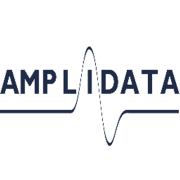Software Defined Storage (SDS) redefines data storage by decoupling hardware from software, providing more flexibility and scalability for data management across diverse storage resources.
SDS enables centralized storage management by abstracting hardware, which allows businesses to adapt quickly to changing data demands. This agility is essential for addressing growing data volumes and optimizing storage costs. Users often appreciate the increased efficiency and reduced hardware dependency SDS offers.
What are the key features of Software Defined Storage?Industries such as finance, healthcare, and telecommunications leverage SDS for its ability to handle large volumes of sensitive data with high security and reliability. The ease of integration into cloud environments makes it a popular choice for organizations undergoing digital transformations.
SDS proves essential for organizations looking to streamline their storage management practices while supporting emerging technologies and scalable infrastructures efficiently.











































Today’s businesses are growing at a very rapid pace, and SDS provides the much-needed solution to maintaining scalability, cost-effectiveness, and profitability. An effective SDS solution can ensure that administrative tasks are reduced and, by using automated protocols, improve response time needed to adjust to changes in storage requirements. SDS gives greater control to businesses to optimize growth and remain competitive in the marketplace.
Traditional storage solutions can reach storage capacities very quickly and do not allow for the flexibility and agility growing businesses need today to stay sustainable, productive, and profitable. Traditional storage solutions keep businesses locked into a defined infrastructure that can inhibit growth and effectiveness. By using storage virtualization protocols, SDS gives businesses the ability to respond quickly to storage capacity needs, helping them to stay competitive, productive, and profitable. SDS is where business enterprise is going and growing toward now and in the foreseeable future.
Although SDS can still be very much a do-it-yourself solution, there are many competitive vendor storage options available to meet the needs of every unique business enterprise in the marketplace today. These vendor storage solutions can meet businesses’ specific needs for agility, flexibility, cost-effectiveness, and user-friendliness, making an SDS vendor solution an even better choice. These vendor storage solutions have all the hard work already done and have simplified the overall process, making an SDS solution even more efficient, effective, and productive.
Software Defined Storage provides improved scalability by decoupling the control and management of storage resources from the underlying hardware. This allows for seamless expansion as your data needs grow. You can add storage capacity without having to worry about vendor lock-in or expensive hardware upgrades. The flexibility offered by SDS enables you to efficiently manage resources, optimize storage use, and ensure high availability, making your IT environment more responsive to changing demands.
What are the key benefits of using Software Defined Storage in a hybrid cloud?Using Software Defined Storage in a hybrid cloud environment offers several benefits. It provides unified management across different storage platforms, improving visibility and control. This harmonization helps in reducing costs by optimizing storage utilization and automating tasks. SDS enhances data security with consistent policies across all environments and ensures data mobility, allowing you to easily migrate workloads between on-premises and cloud locations without disruption. The technology also supports rapid deployment of new services, enhancing your agility and responsiveness to changing business requirements.
How can Software Defined Storage enhance data protection?Software Defined Storage enhances data protection by integrating advanced security features directly into the storage layer. Features like encryption, access controls, and replication are built-in, providing robust data protection strategies. SDS enables centralized policy management, ensuring consistent application of security measures regardless of where the data resides. The ability to create automated backups and disaster recovery plans further secures your critical information, minimizing downtime and ensuring business continuity in the event of an unexpected disruption.
What considerations should you evaluate when adopting Software Defined Storage?When adopting Software Defined Storage, it is important to evaluate your organization's current and future storage requirements. Assess compatibility with existing infrastructure and the ease of integration with new and legacy systems. Consider the level of automation and management capabilities offered by the SDS solution, as well as its support for varying workloads. Cost-effectiveness and vendor support are also crucial factors to ensure smooth implementation and operation. Evaluate performance benchmarks in real-world scenarios to ensure the selected SDS meets your operational demands.
How does Software Defined Storage integrate with containerized environments?Software Defined Storage integrates with containerized environments by offering storage solutions that are as dynamic and flexible as containers themselves. SDS delivers persistent storage for containerized workloads, supporting stateless and stateful applications equally. It provides features such as dynamic provisioning, data protection, and seamless scaling. By using SDS with container orchestrators like Kubernetes, you can automate storage management tasks and benefit from expanded functionality and fine-grained control, aligning IT resources with fast-paced development cycles.